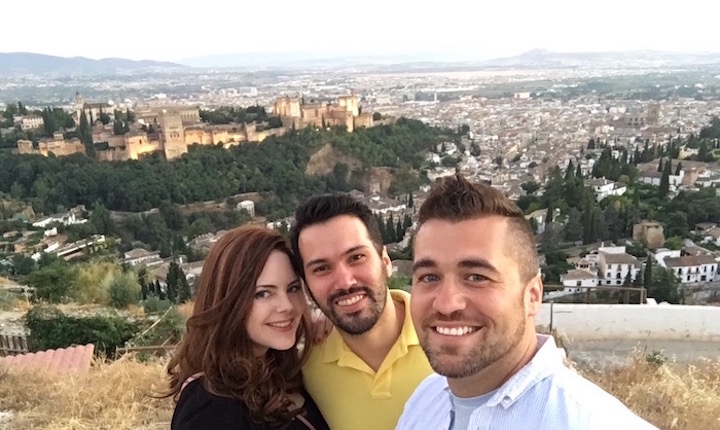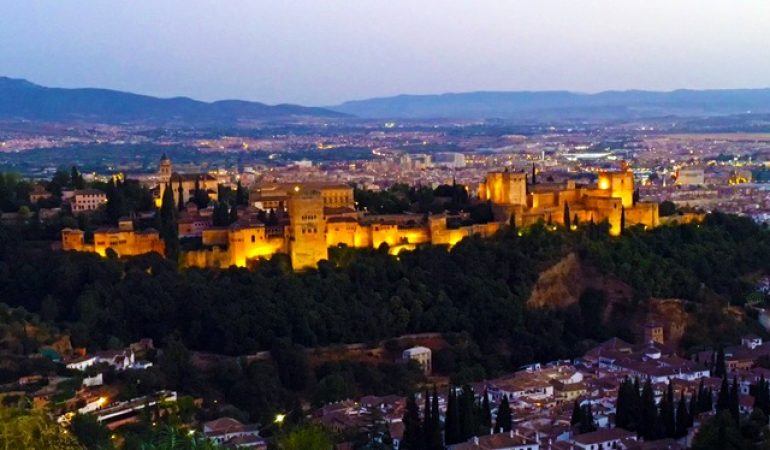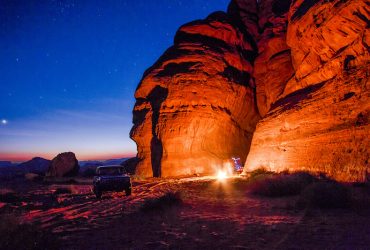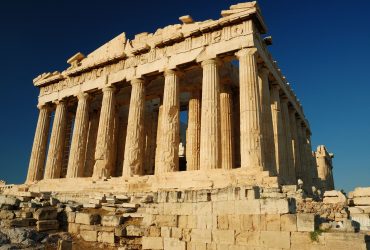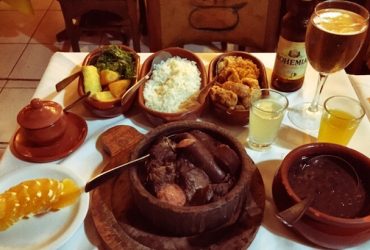Road Trip Around Spain’s Andalucia Region
The vast region of Andalucia is one of the richest parts of Spain in terms of both culture and history. Within its loose boundaries lie some of the Iberian Peninsula’s greatest cities such as Cordoba, Seville, and Granada. Built upon the streets of these cities and still standing today are Roman infrastructural marvels, Moorish fortresses and palaces, and grand Renaissance cathedrals. Flamenco dancing was born and flourished here, as did Spain’s renowned olive and olive oil industries.
Andalucia also gave birth to the Age of Exploration as the departure point of Christopher Columbus, Hernán Cortés, Ferdinand Magellan, and many other legendary global explorers. Today it is still a gateway between the Atlantic and the Mediterranean via the Straight of Gibraltar, and between Europe and Africa via Morocco.
Life in Andalucia is slower, more relaxed, more chill, and it was the perfect place for a meandering late-summer road trip for me and a Brazilian friend I previously met in Tel Aviv. The geographical and cultural crossroads just couldn’t get any more diverse than that, making Andalucia the perfect place for a new multicultural adventure.
When I flew from London to Granada I had just spent a few days recuperating from a 1000-mile road trip around Scotland with a British mate. I had never driven in the United Kingdom before, nor anywhere that placed the driver on the opposite side of the car and the road. This terrified me a little, so I told said mate that I’d happily pay for the car if he drove in Scotland.
He ended up driving a grand total of a few hundred miles, and the rest was left to me to suck it up and make it happen. I did, and I was quite proud of myself for the accomplishment and for acquiring the new skill of driving on the opposite side of the road. But I was exhausted, so when I finally landed in Granada to begin yet another long road trip around southern Spain, I told my amigo that I would happily pay for the car if he would do most of the driving.
That’s when he confessed – he didn’t know how to drive nor did he have a drivers license. He just assumed since he saw me doing so many road trips abroad that I must love driving and he’d just tag along and make it fun. Aye, Dios mio!
Regis had lived and worked in Spain for quite a few years, but since he didn’t have a car and didn’t drive he had seen relatively little outside of his home in Granada. We wasted no time getting on the road and headed north toward the province of Jaen to begin our journey. There were a few small villages out in the countryside in this area that Regis had heard about and wanted to explore, including Ubeda and Baeza.
These two small towns are obscure today, although centuries ago they were once regional centers of noble power and patronage. But in their modern obscurity they protect numerous beautiful Renaissance churches and clerical palaces from the hoards of tourists that flock to the Andalucia’s larger cities. So treasured are these towns, however, that UNESCO made each of their city centers a World Heritage Site in 2003.
This historic backdrop combined with the virtual absence of any other tourists save ourselves called for drinks, so we seated ourselves at a shaded outdoor cafe in Ubeda and enjoyed several glasses of tinto de verano, a shared paella, and the classic view.

For the second stop of the day we headed west toward Cordoba, and this is honestly the city I was most looking forward to visiting on this entire trip. When I was an undergrad junior studying abroad at the American University in Cairo, I enrolled in an Islamic art and architecture class to check off my dreaded fine-arts requirement. I thought I would hate the class and struggle through it, but it turned out to be one of my favorite classes in all of my time as an undergrad in university. When it came time for a lengthy final paper in the course, I chose to research and write about the Great Mosque of Cordoba. Ever since then, I have been enthralled with this historic marvel, so I was over the moon about finally being able to visit it on this trip.
The original Visigothic church that stood on this site was demolished in the late 700s and over it was built a sprawling and beautiful mosque by Spain’s invading Moorish rulers. While many Islamic sites were destroyed after the Christian reconquest between 1200 and 1500, the Great Mosque of Cordoba was thankfully spared this fate. Instead, a towering Renaissance cathedral was constructed smack dab in the middle of the complex, creating what lasts today as an incredibly rare example of a fused Christian AND Islamic architectural masterpiece.
Building up such high expectations often leads to equally low disappointment, but I was relieved that this was not the case at all with Cordoba. The Great Mosque/Cathedral was every bit as spectacular as I had imagined for years, and the guards literally had to shoo me out at closing time because I just wanted to keep marveling at its glorious interior. If you happen to also be there this late in the day, one really neat thing to look for is the columns of bright colorful light cast down into the mosque area from the high-up stained glass cathedral windows. You can stand in the middle of these beams and become enveloped in beautiful shades of light and color.

Just down the street from the Great Mosque/Cathedral in Cordoba is the Alcazar de los Reyes, a royal castle and fortress dating back to Medieval times. The residence was once home to Queen Isabella of Castile and King Ferdinand of Aragon, who are most well known for their sponsorship of Christopher Columbus’s voyages to the “New World.” Unfortunately for me, I spent so much time in the Great Mosque/Cathedral that I missed out on the Alcazar de los Reyes. We did spend the night in Cordoba at a quaint little Moroccan-style hotel in the center of town, but we hit the road early the next day to continue to journey around Andalucia. Cordoba is a city that I seriously cannot wait to go back and visit again, though.
The next tourist target on our list was Seville, or Sevilla as you may also see it written, but since we had all day to get there we chose to get off the highway and take a longer route a little ways north along the Guadalquivir River. This was perfect for leisurely taking in a lot of the smaller towns and villages that dot the Andalucian countryside. My favorite of these by far was a town called Almodovar del Rio. But in the center of this otherwise unremarkable little hamlet was a majestic castle perched on top of the hill around which the village is built.
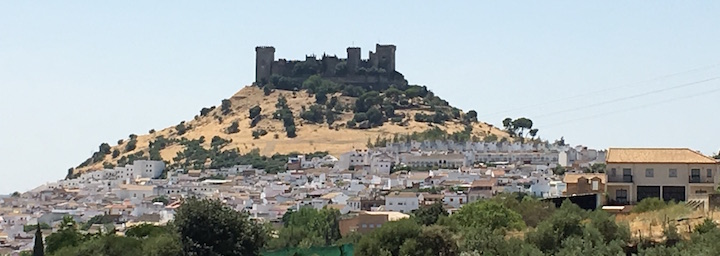
Like many castles, palaces, and fortresses in this region, the Castle of Almodovar del Rio started out as a Roman fort, was later expanded as a Moorish fortress, and still later renovated into a Medieval castle. Today it looks like something straight out of Game of Thrones and is open to public visitors. I’m sad to say that even though we were taking our time this day on our road trip, all we managed to do was stop along the side of the road to marvel and take photos from a distance. Then we continued on our merry way to Seville.
Seville is at the heart of Andalucia and is the region’s largest city and cultural hub. After our slow drive through the Spanish countryside from Cordoba, we arrived in Seville by early evening tired and hungry. Seville has an amazing Moorish palace – later converted into a Christian palace, of course, the upper floors of which are still in use by Spain’s royal family today – and a famous cathedral in the historic city center. But by the time we made it there by car and spent 30 minutes driving around looking for parking, including an awkward few minutes mistakenly driving through a pedestrian-only area, we were quite exasperated. So we just parked illegally near the cathedral, walked over, took a picture, got back in the car, and drove out of Seville. Needless to say this is another place in Spain that I need to revisit and spend more time genuinely exploring.
Next we headed south toward Jerez but skirted it on the freeway in order to head further southeast toward Gibraltar. I’ve always been fascinated with tiny sovereign and autonomous territories, and Gibraltar is one of the most fascinating in Europe. Britain captured the little snippet of land during the War of Spanish Succession in 1704 and Spain along with the rest of Europe acquiesced to the UK’s ownership of it “in perpetuity” via the Treaty of Utrecht in 1713. Since then, Gibraltar has been a solidly British outpost at the southern tip of Spain and the strategically critical gateway between the Atlantic and the Mediterranean.
Driving into Gibraltar was easy, but I was really hoping to get a passport stamp there. They initially waived us on through, but when I parked and went back to ask for one, the officer explained that they only stamp passports if you require a visa to enter the UK. Out of generosity he then reached for his stamp anyway, but couldn’t find it even after searching through his desk. Alas, I missed out on that one.
There’s not much in Gibraltar, but it’s neat to at least drive around. They drive on the right side of the road in Gibraltar like in Spain and unlike the UK, which makes it easier to go back and forth across the land border by car. A little over 30,000 people live there and although they all speak English, some speak a funny combination of English and Spanish (called Llanito, not Spanglish), switching back and forth between the two seemingly just by habit.
Down at the very tip of the peninsula there’s a park from which you can see Africa (Morocco) on a clear day. But it doesn’t take a clear day to see the famously ginormous Rock of Gibraltar jutting into the sky that visually dominates the whole tiny territory. You can take a cable car up to the top of it and play with the monkeys, but we skipped that party. Instead the aviation nerd in me really wanted to watch a few planes take off and land at the Gibraltar airport, which bisects the peninsula and its main public road. When planes take off and land, all traffic stops and you witness what must be a harrowing experiences for passengers on board given the necessary runway extensions that had to be built out into the water to provide enough runway length for jets.
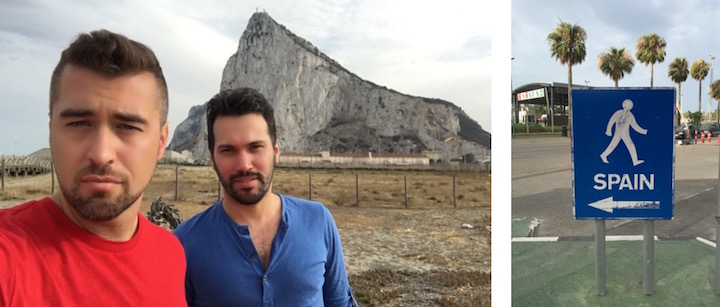
After crossing back into Spain, we continued on our journey east along Spain’s southern Mediterranean coast toward a little beach town near Malaga called Torremolinos. This is a quaint little party town away from the hoards of tourists who flock to the beaches of nearby Malaga and Marbella. We met up with some Spanish friends from the region who come to Torremolinos every weekend to party and relax, and as expected of our awesome amigos the drinks were flowing and the music was pumping on the beach when we arrived. After long stretches on the road this day, technically spanning two countries mind you, we thoroughly enjoyed switching gears into beach party mode for the evening and enjoying the vibe of the festive little town.

The next day we headed back to Granada to round out our tour de Andalucia. Regis had to go back to work (booo!) and I took some time to try to see more of our starting city, which I had skipped over on the first day in order to bolt for the countryside. Granada was an incredibly important city during and even after the period of Muslim rule on the Iberian Peninsula, and its most iconic landmark, the city-like Alhambra Palace, was home to ruling sultans for centuries. When Ferdinand and Isabella reconquered Granada in 1492, they liked the Alhambra so much that they moved themselves and the royal court into the complex to live. In fact, this is where they were ruling from when Christopher Columbus famously came to them to ask for their support for his voyage to find a new sea route to India via the Atlantic.

My friend Regis kept telling me to get tickets to visit the Alhambra in advance, but in typical me fashion I figured I would just wing it. Needless to say, when I drove up there and inquired about tickets, they were all sold out for the day. So that’s yet another thing I need to go back and see on a second road trip through Andalucia some time soon. Anyone want to join?
When it was finally time to leave Spain, the nearby airport in Malaga had convenient direct flights back to the United States during the summer months. The drive between Granada and Malaga took me through a series of beautiful deep valleys over which huge bridges were built. That made for some more fantastic vistas in my final few hours in Andalucia on my way to the airport. Even with as much territory as we covered on this road trip over the course of a few days, you can clearly see that we could have spent a lot more time there to see and experience everything there is to take in across this region.
Next time I’ll definitely make time to go in the Alhambra in Granada (and plan ahead for tickets), I’ll check out the Alcazar de los Reyes in Cordoba, and I’d really love to revisit the Great Mosque/Cathedral there too. I wouldn’t mind stopping at and going in the Castle of Almodovar del Rio in the countryside between Cordoba and Seville, and of course I need to spend at least a full day, if not two, in Seville seeing it without the pressure of being illegally parked. And in the same way we discovered the Castle of Almodovar del Rio by randomly driving by it without even knowing it was there, I’m sure there are lots of other villages and sites off the beaten path just longing for some visitor love.
Spain is such an amazing and historically diverse country and it’s always a pleasure when I have time to explore it. I love Madrid and Barcelona, but as you can see from this trip there’s so much more to it too, even out in the most remote parts of the country. The blending of Roman, Moorish, and Spanish architecture and culture and the influence of the Age of Discovery all converge in Andalucia to make it one of the most incredible road trip regions in Europe, and I’ll definitely be back again to see more. Who else is in with me for round two?
